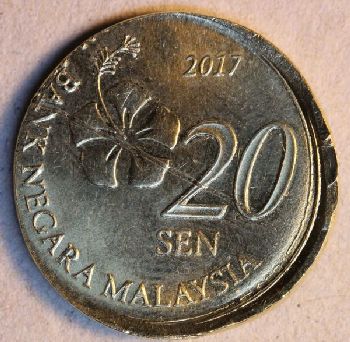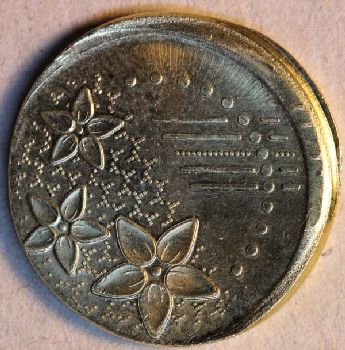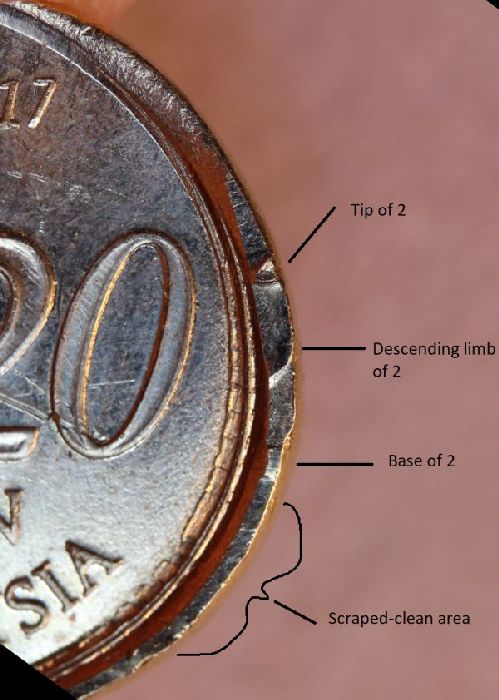Part VI. Striking Errors:
Skidding Coin Errors
Definition: A weakly-struck coin that is pushed sideways while it is still loosely clamped between the dies. Affected design elements are smeared or completely scraped off the coin’s surface on both faces.
A skidding coin error can only occur in the context of a weak (low-pressure) strike. When a coin is weakly struck as the result of insufficient die approximation (the most common cause), it is necessarily held in a weak embrace by the dies, even at the lowest point of the hammer die’s downstroke. If the coin should be knocked sideways while it is still weakly clamped between the dies, the newly-struck design elements can be smeared or scraped away as the coin is pushed across the two die faces. Smearing can occur during the final moments of the downstroke, immediately after the hammer die has reached the lowest point of its downstroke, or while the hammer die is lifting off the surface of the coin.
Skidding coin errors should not be confused with skidding die errors (slide doubling, skidding misalignments, design decapitation errors, design ablation errors). Skidding die errors of any significance are always found on the face struck by the hammer die and are caused by die movement. Skidding coin errors are bifacial and are caused by coin movement.
This 2017 Malaysia 20 sen coin represents the only known example of a skidding coin error. The error occurs in conjunction with a 40% off-center, rim-restricted second strike. The first strike was an uncentered broadstrike that left a deep collar scar on the right side of the reverse face. Resistance from the stiff collar pushed up a low, thick, vertical flange on the obverse face. Opposite the flange is an unstruck crescent on the reverse face that lies between the die-struck field and the collar scar. Before the second strike, minimum die clearance abruptly increased so that, at their closest approach, the dies could only manage to contact the top of the flange and the unstruck crescent during the second strike. While the coin was clamped between the dies it was pushed or carried sideways. It’s quite possible that the feeder/ejector provided the necessary force. The movement seems to have been more of a pivoting action, with the greatest arc of movement toward the south.
On the obverse, the descending limb of the 2 has been grossly smeared in a west-to-east direction (consistent with a clockwise pivot of the coin). The base of the 2 is also smeared, but not as severely, as it was aligned with the axis of movement. Letters belonging to the words SEN and MALAYSIA have been completely scraped off.
On the reverse, the five horizontal lines (four solid and one dotted) that lay medial to the arc of circular dots have been modestly distorted by smearing. These elements were also aligned with the axis of movement. The flower petal closest to the lowest horizontal line has been grossly smeared.



